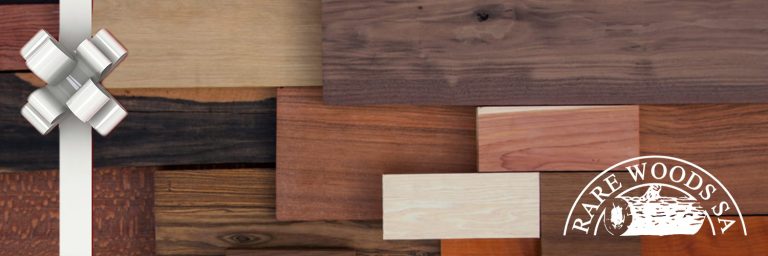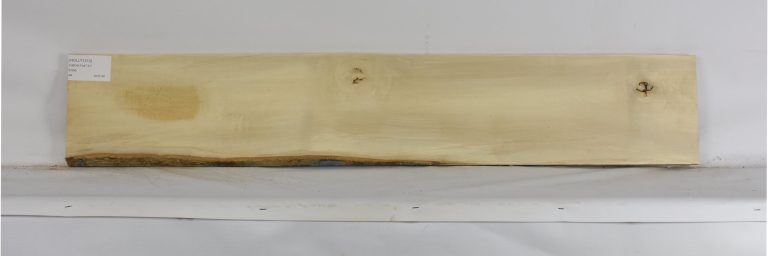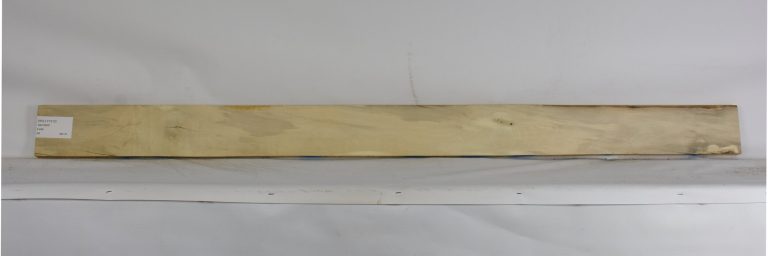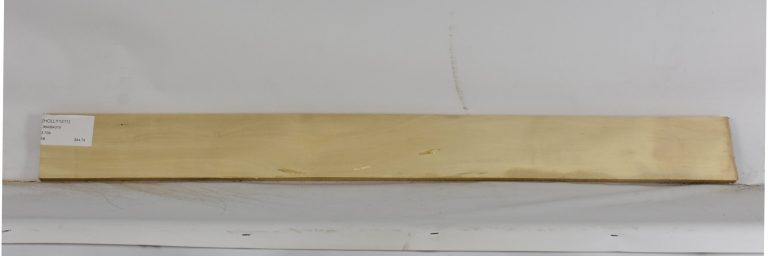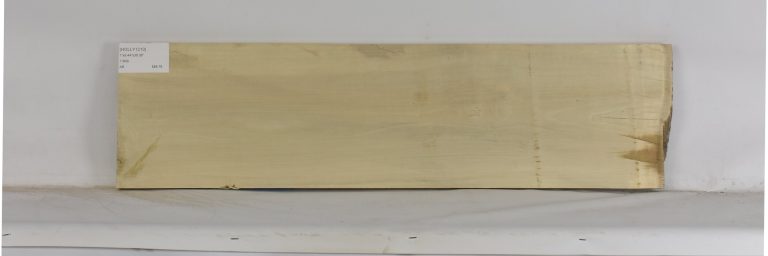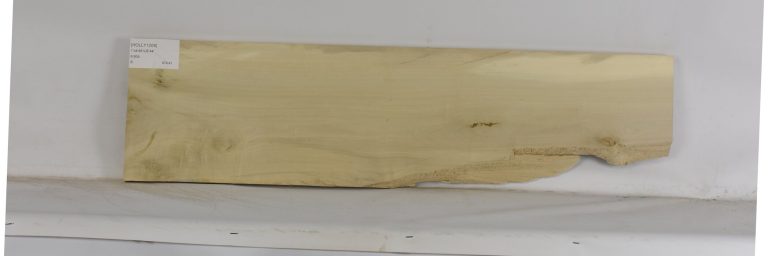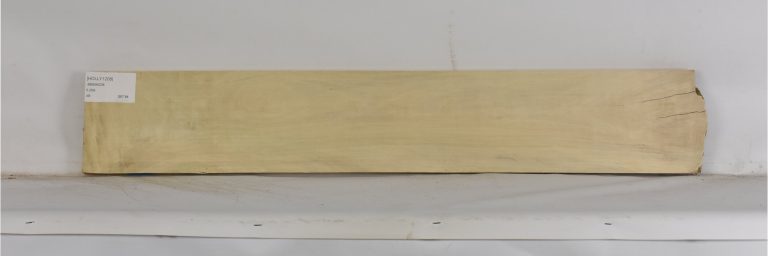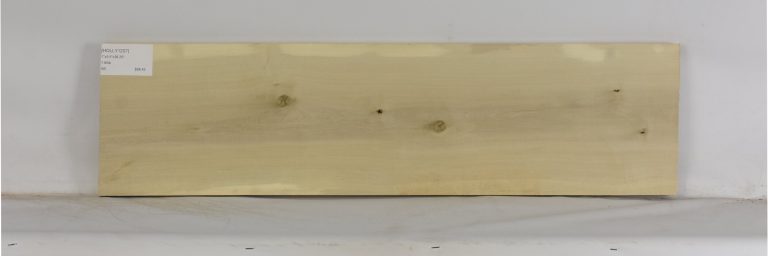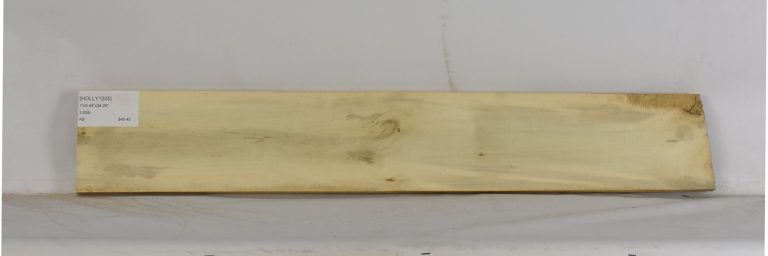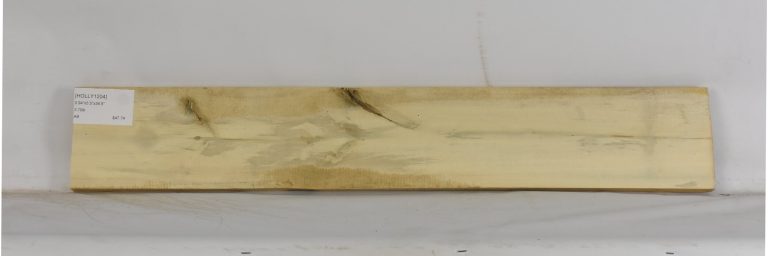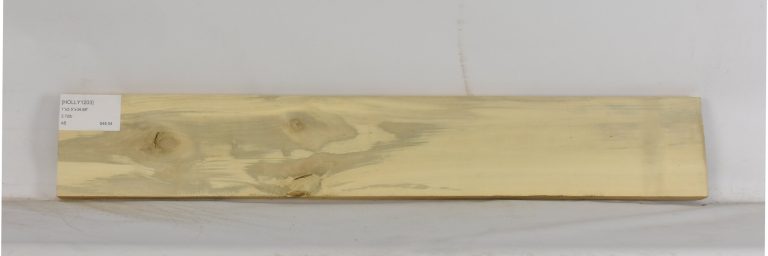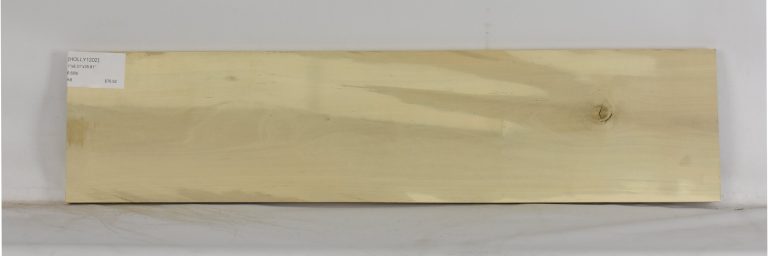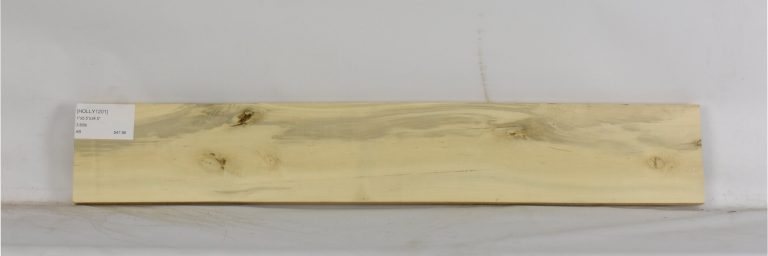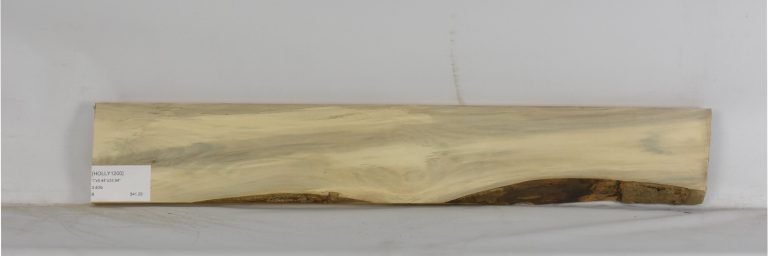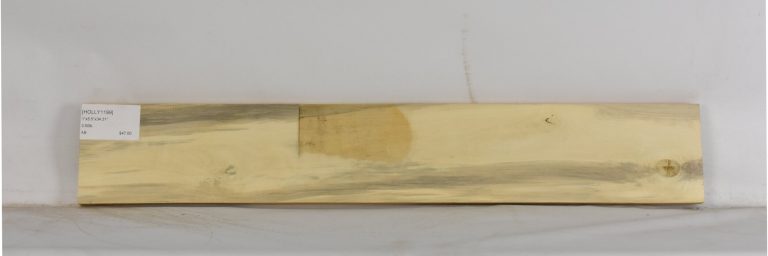Holly

Holly is an interesting domestic wood. Those who know of it prize it for its consistent pale white color which typically slows little to no discernible grain patterns. Although it has traditionally been used as an ornamental or accent wood, it has enjoyed a recent surge of popularity among turners for its fine aesthetic and turning properties. In certain applications, it has been dyed black and used as an ebony substitute — although it lacks the requisite density for most musical applications.
Holly needs to begin the drying process almost immediately after it’s cut, as, otherwise, fungal discoloration can occur. For this reason, it is generally harvested during the winter months and not left to air dry for very long before making it into a kiln.
The wood is non-durable, so its use is exclusively confined to indoor applications. Products and items produced with this wood do best when a hardening protective finish is applied, and the wood is very good at maintaining its original color when such a clear finish is administered.
The wood glues, stains and finishes well, however it can be difficult to work on account of its sometimes interlocked grains and the numerous knots that are commonly present.
Not listed in the CITES Appendices or on the IUCN Red List of Threatened Species.
Why We Love This Wood
Holly is your best chance of a lumber species that will remain as close to white as possible over time.
Client Creations
Quick Look

A Popular Choice in
Vital Statistics
| Main Color Group | Yellow / White |
| Grain Pattern | Even |
| Avg Dry Weight - LB/BF | 3.3 |
| Avg Dry Weight - KG/M3 | 640 |
| Janka Hardness - LBF | 1020 |
| Janka Hardness - N | 4540 |
Pricing
Description
Grade
UOM
Price
Pre-cut Sizes
0 resultsType
Dimensions
Grade
Price
Lumber Packs
0 results
